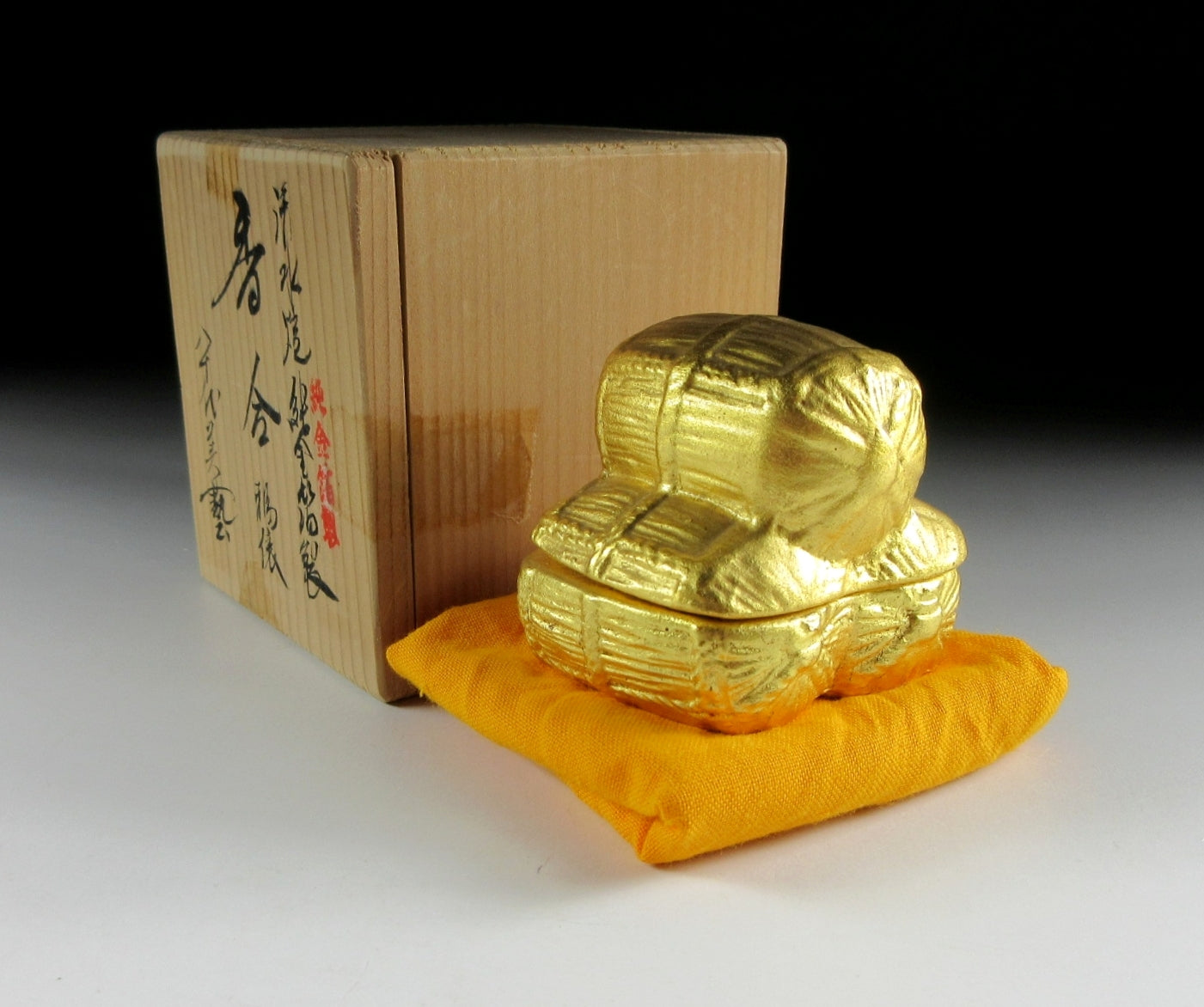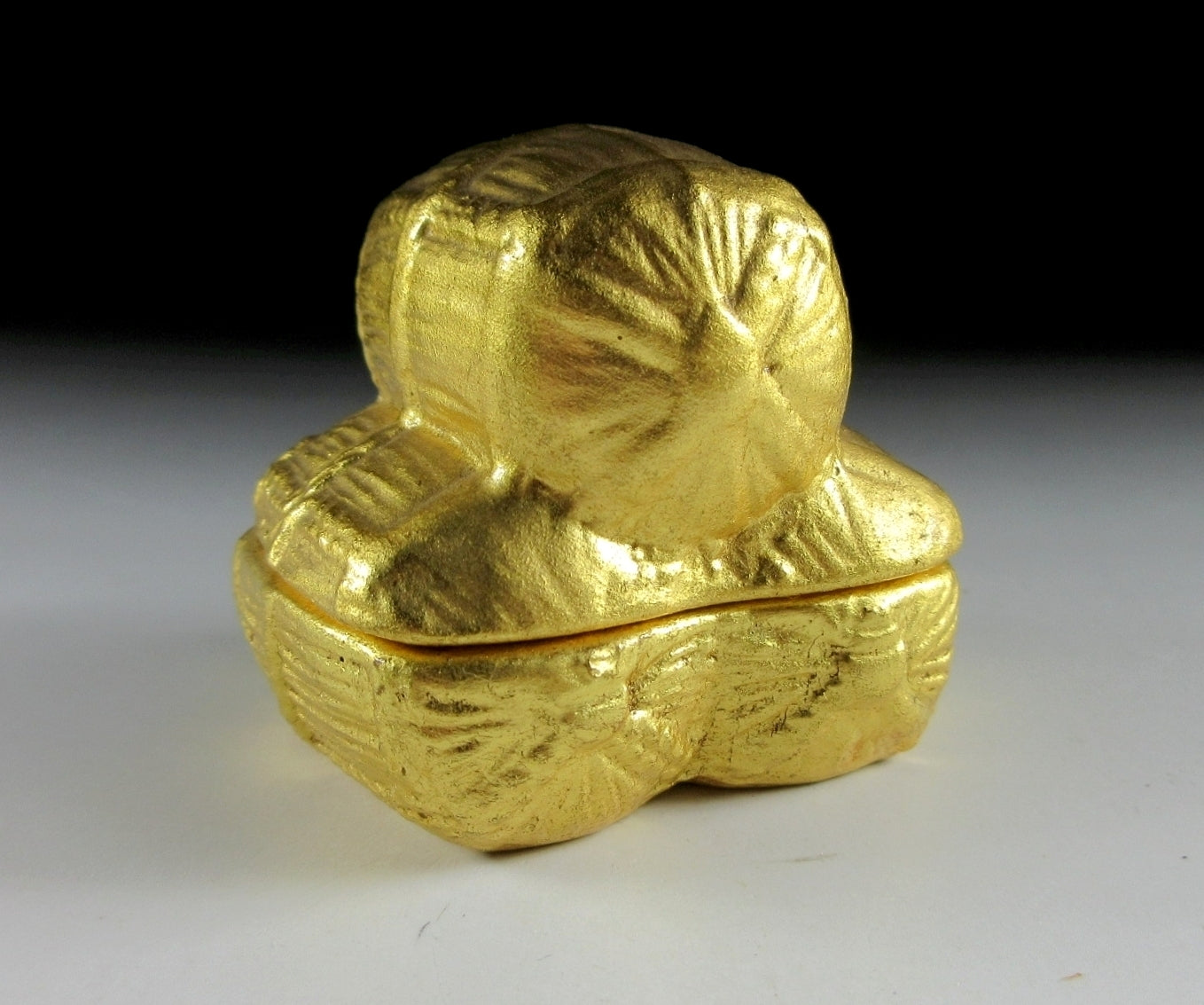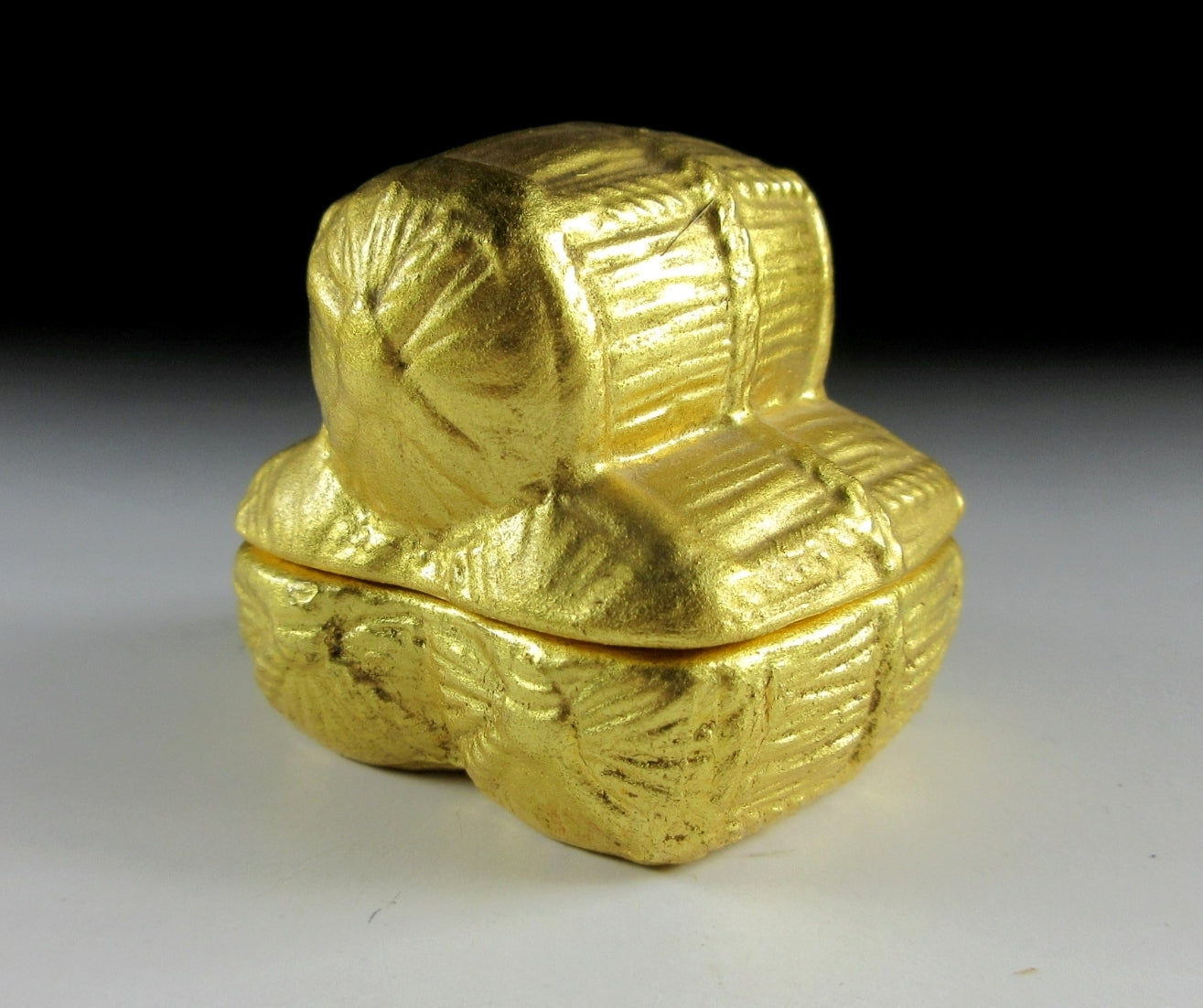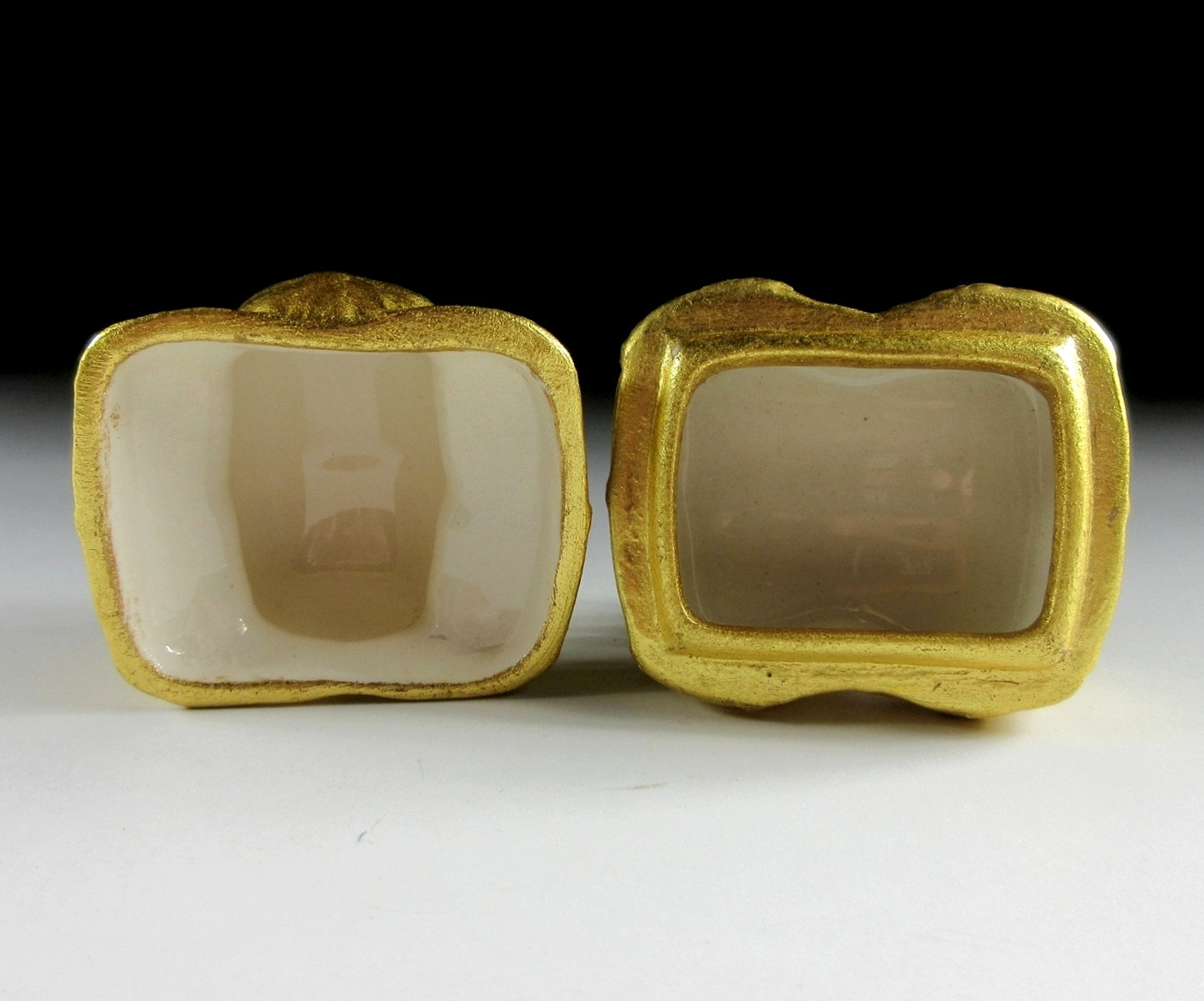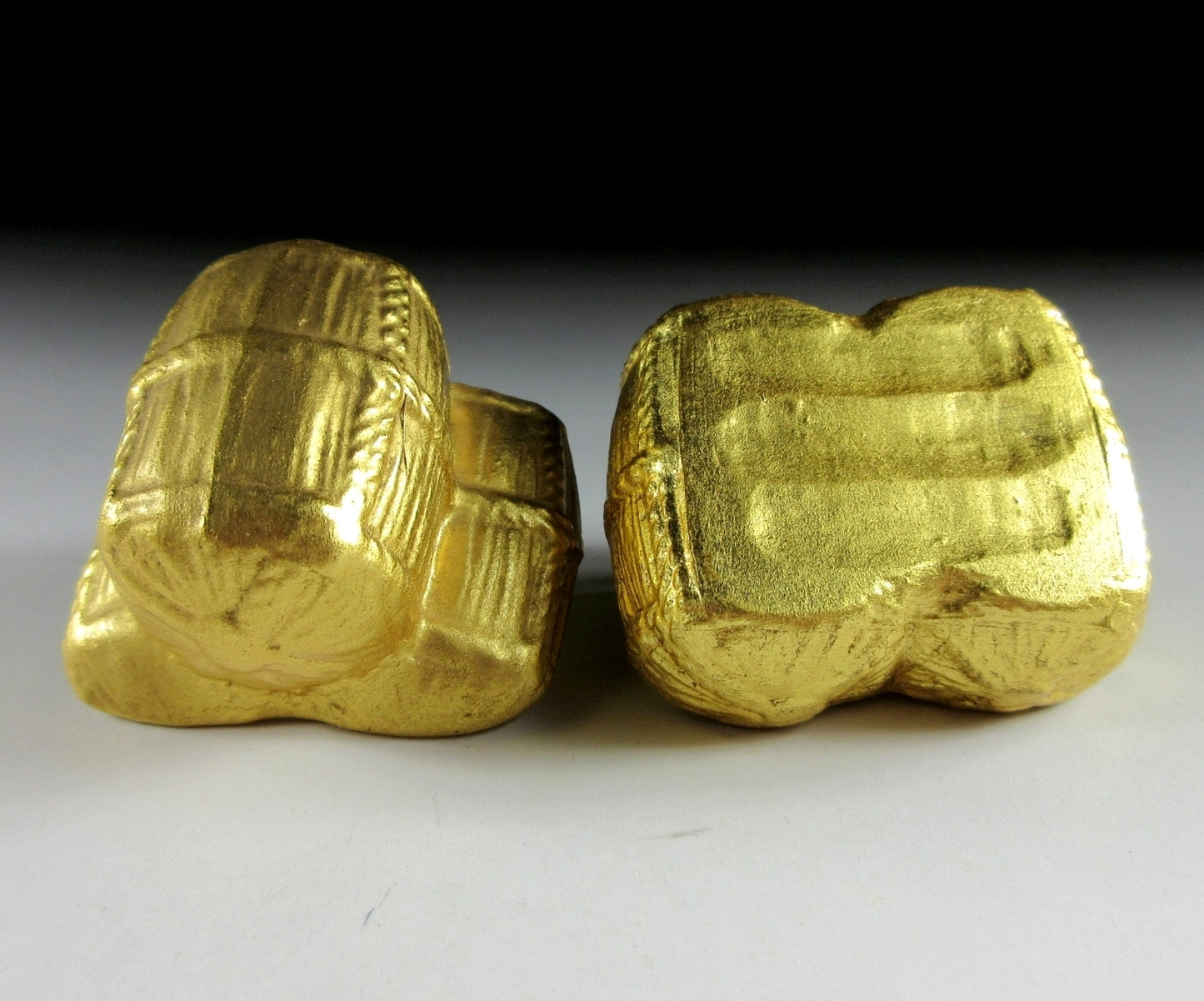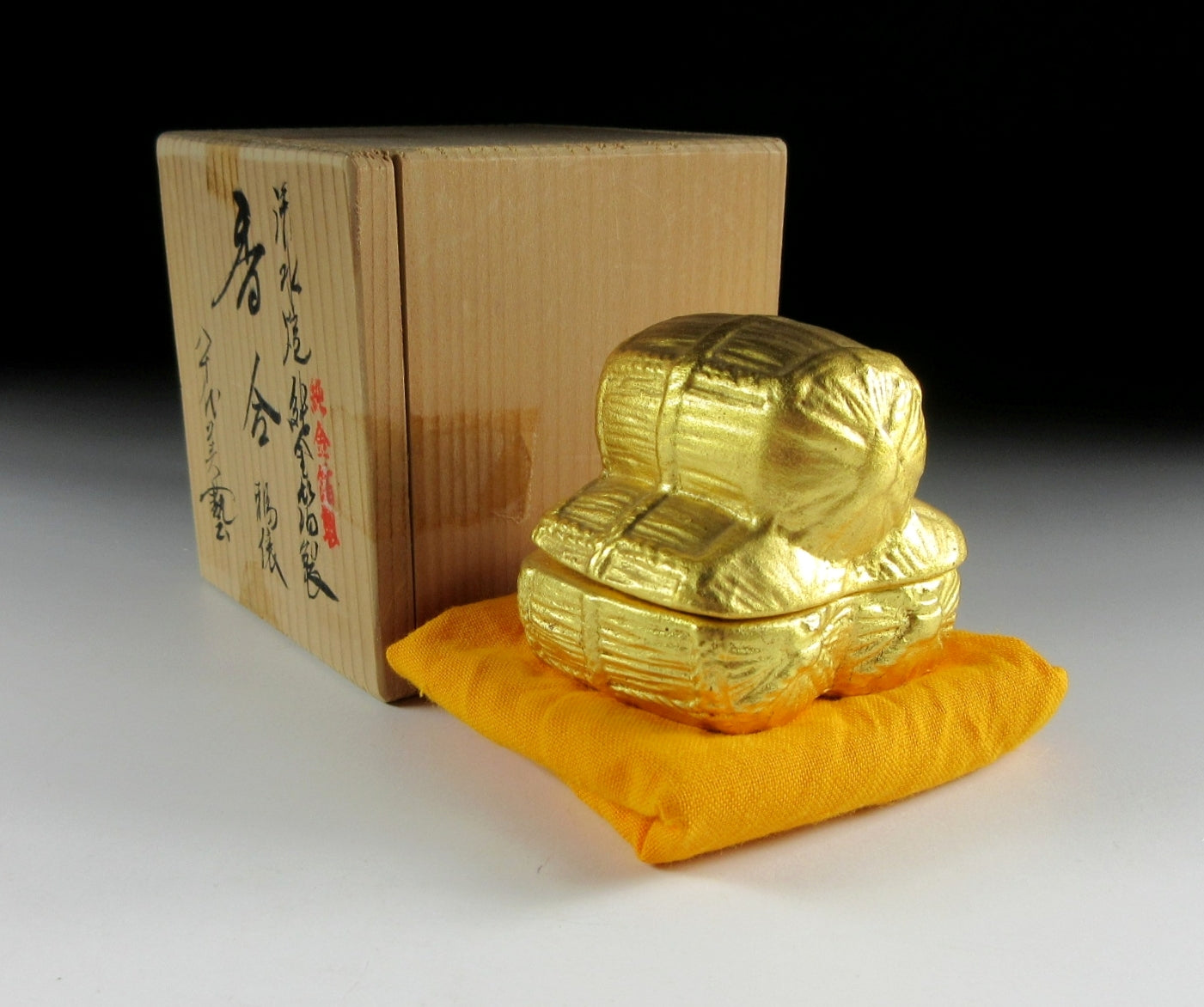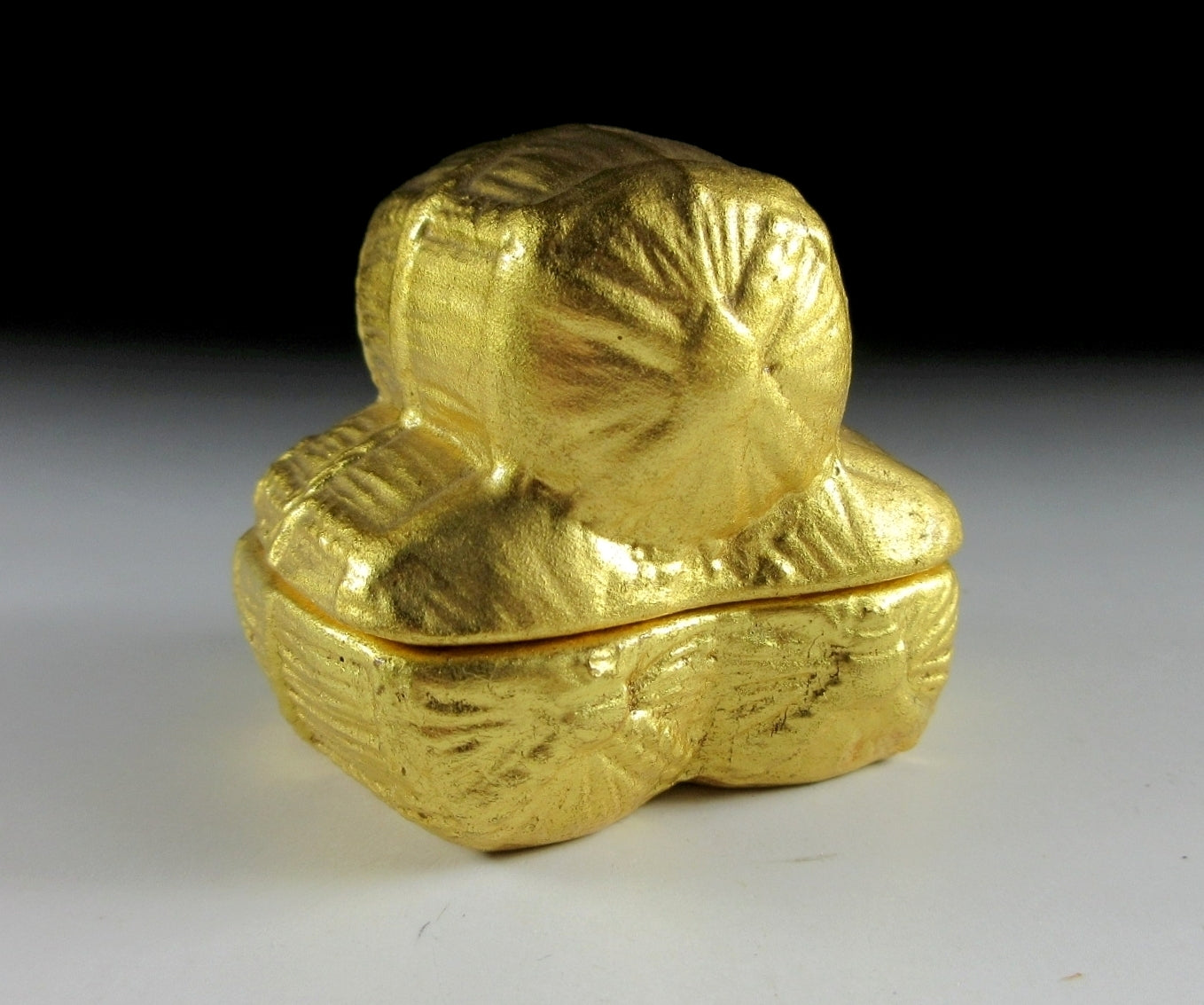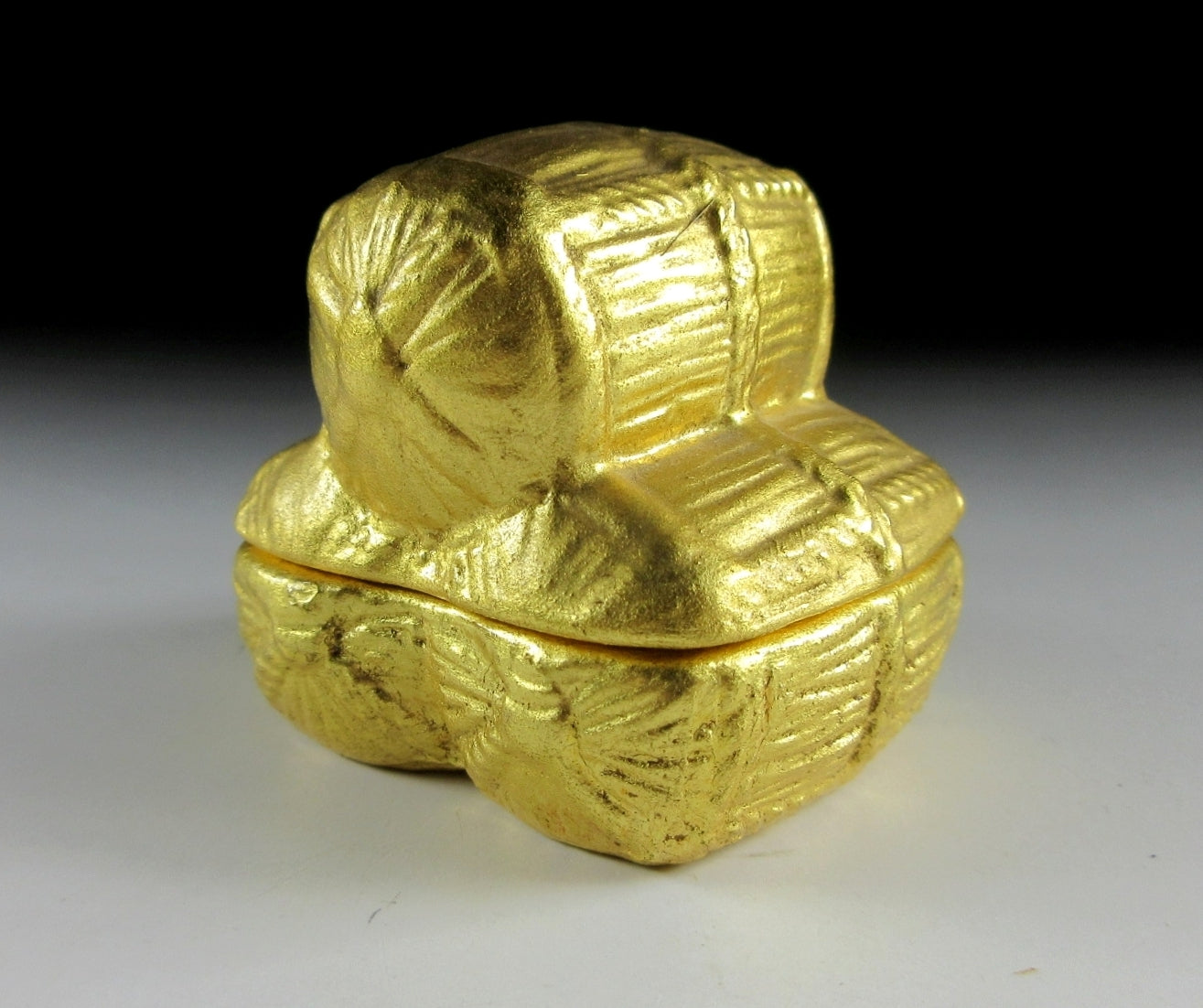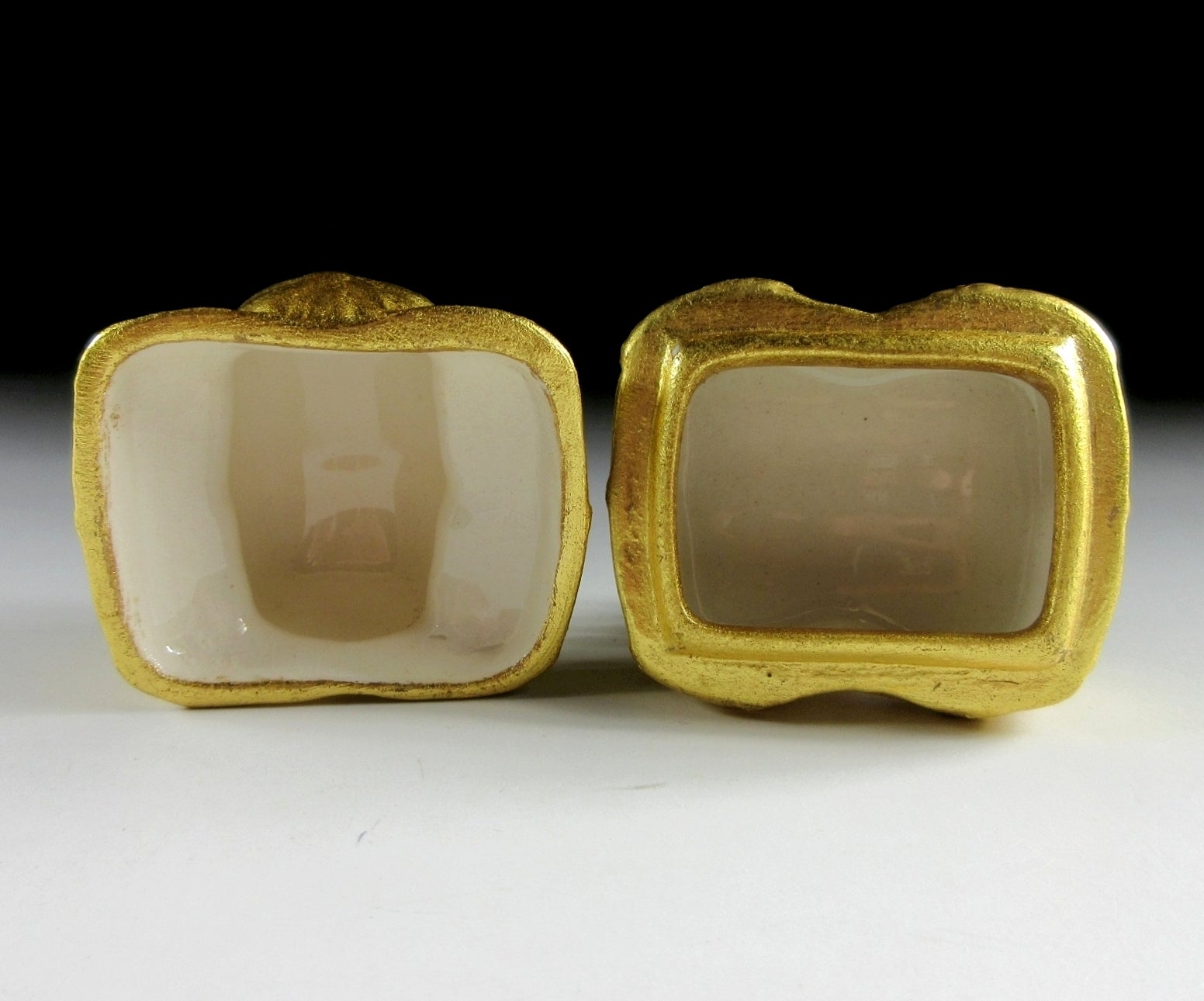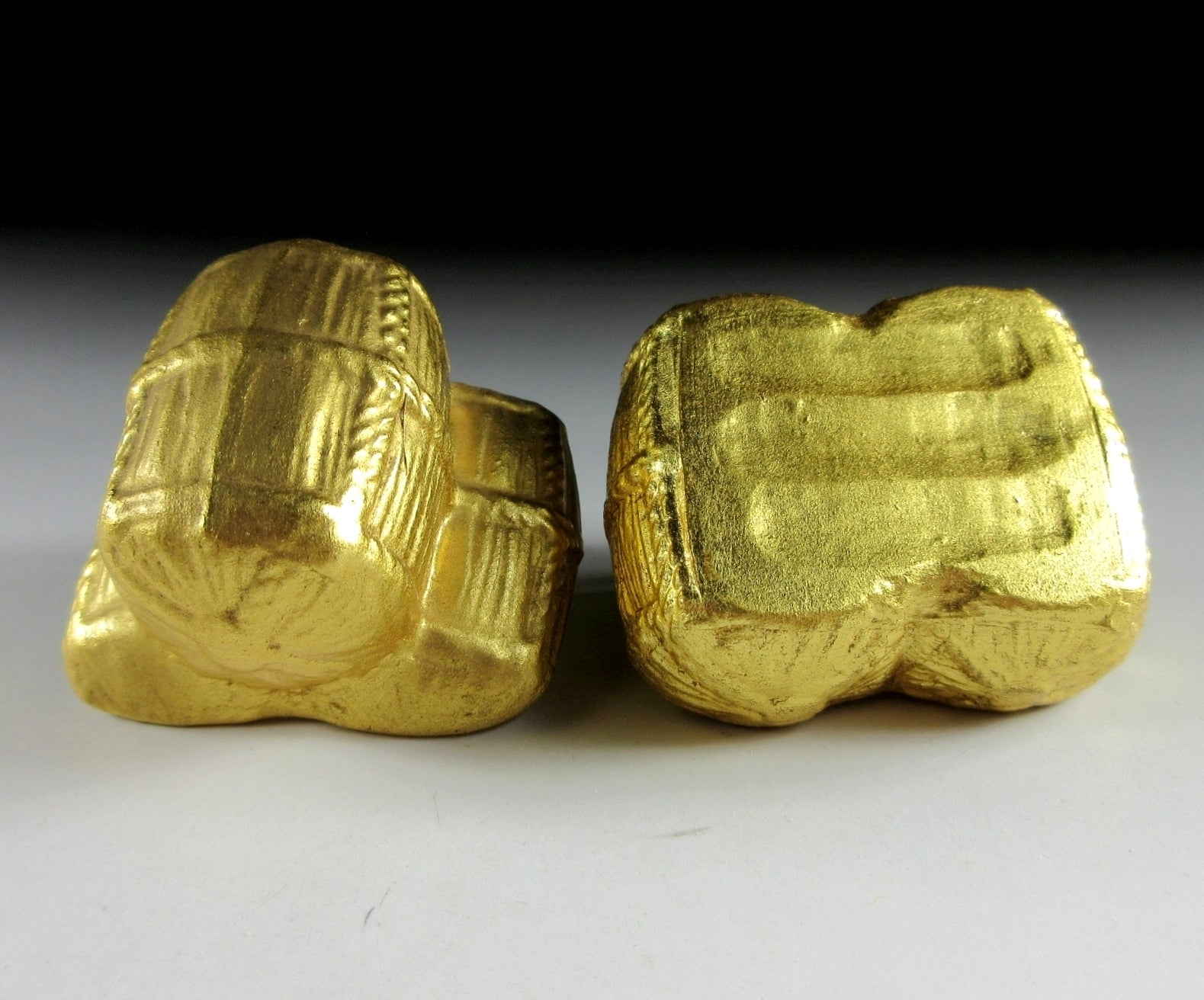Kominka Zakka
Tokodo 'Fukutawara' Gold Bales Kogo
Tokodo 'Fukutawara' Gold Bales Kogo
Couldn't load pickup availability
*SHIPPING OPTIONS VARY DEPENDING ON THE DESTINATION, PLEASE SCROLL TO THE END OF THIS LISTING FOR MORE DETAILS.
This listing is for a splendid Kyo-ware fukutawara kogo made around 20 years ago for ‘Tokodo’in Tokyo. It is moulded into the shape of three rice bales, and the exterior is coated in kinpaku gold leaf. Fukutawara translates as lucky straw bale, and these bales are a popular type of decoration at New Year because they’re thought to bring wealth. The kogo in this listing is ample in size and suitable for holding both kneaded or woodchip incense, though pottery kogo are typically used for holding kneaded incense during the cooler months. It comes with its original signed wooden storage box, as well as a yellow wrapping cloth for when the item is not in use.
Tokodo was established in 1936 by Yoshioka Sumio. Tokodo offers the finest pottery from various production areas and kilns throughout Japan. In 1949 they were awarded a Royal Warrant and designated as official purveyor to the Imperial Household Agency. The first ever Royal Warrant was granted in 1891, and to be eligible, the merchant needs to pass requirements such as delivering to the Imperial Household Ministry for at least five years. This system was discontinued in 1954, however Tokodo has continued to deliver tableware to the Imperial Household agency. In 1961, they delivered tableware when the imperial residential palace of the Emperor Showa was completed. In 1990,they delivered more than 20,000 tableware pieces when Emperor Heisei ascended to the throne. Tokodo offers a wide range of products, from commercial-use plates used in restaurants, hotels, etc., to everyday tableware sold at high-end department stores across Japan. They also commission kilns to produce high end teaware for special occasions. **Fellow sellers, this information was researched by Kominka Zakka and CANNOT be used in your own listings.
Kogo are for holding incense during the tea ceremony. Kogo vary depending on the season. In summer wooden kogo are used for holding chips of incense wood, and in winter ceramic kogo are used for holding kneaded incense intended for the hearth. During the tea ceremony, incense is added to the charcoal fire during the charcoal-laying procedure.
Kyo-ware originated in the 17th century in Kyoto and features overglaze enamel pigments on a porcelain base. The porcelain base acts as white canvas, allowing for beautiful and superior quality designs to be painted. Kyo-ware artisans traditionally produced chawan and utensils for the tea ceremony, however contemporary potters specialize in tableware, tea ceremony items, incense holders, and okimono. Kyo-ware was designated as a traditional craft in 1977.
Sizes
Box: H.7.4cm (2.9”) x 7.6cm (2.9”) x 6.8cm (2.6”)
Kogo: H.4.2cm (1.6”) x 5.1cm (2”) across x 4.1cm (1.6”) from back to front
Condition
It’s in very good condition with no chips or cracks, the box however has some tape marks.
THESE ARE SHIPPING ESTIMATES BASED ON THE CURRENT GLOBAL SITUATION
**Germany, France, Greece, Spain, Poland, Austria, Slovakia, Lithuania, Slovenia: NO SHIPPING. Very strict and expensive packaging laws in place and we are not licensed to send products to these countries. We have no plan to register at this time because the process is in some cases very expensive and complicated, plus each country has its own set of regulations and application process.
**USA, UK, Canada, Australia, New Zealand, Switzerland, Norway: Airmail Small Packet (approx. 15-28 days). Combined shipping available up to 2kgs for Airmail Small Packet (please send us a message).
**Asia: Airmail Small Packet (approx. 15-21 days). Combined shipping available up to 2kgs for Airmail Small Packet (please send us a message).
**Central Asia, Middle East, South Africa, Brazil, Mexico: EMS Express 10-15 days.
**Russia: No shipping methods available.
Share
